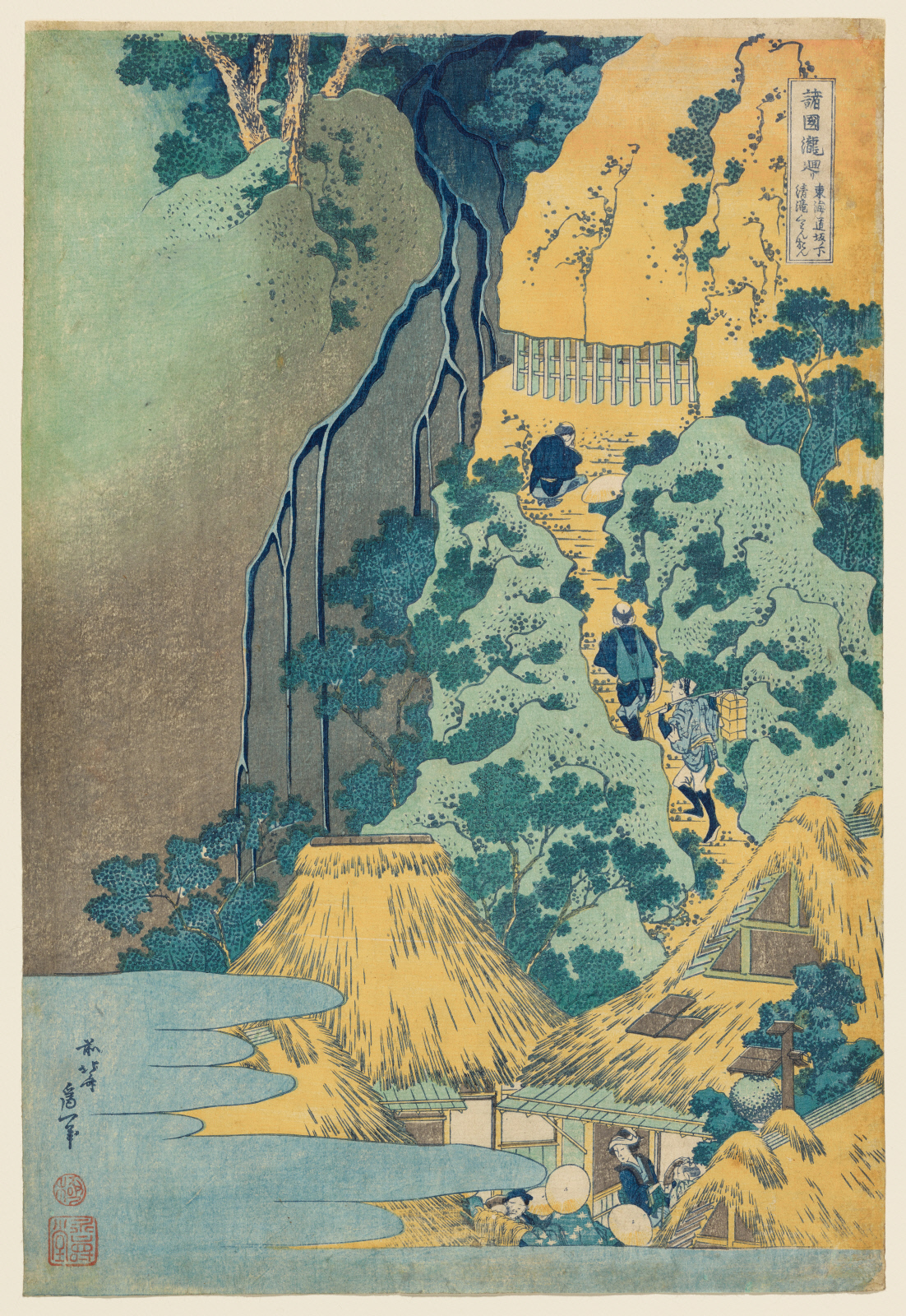 KATSUSHIKA HOKUSAI, THE KANNON OF THE PURE WATERFALL AT SAKANOSHITA ON THE TŌKAIDŌ ROAD, 1832, COLOR WOODBLOCK PRINT. GIFT OF THE RODBELL FAMILY COLLECTION, 2014. THE CLARK ART INSTITUTE, 2014.16.1.
KATSUSHIKA HOKUSAI, THE KANNON OF THE PURE WATERFALL AT SAKANOSHITA ON THE TŌKAIDŌ ROAD, 1832, COLOR WOODBLOCK PRINT. GIFT OF THE RODBELL FAMILY COLLECTION, 2014. THE CLARK ART INSTITUTE, 2014.16.1.
Ukiyo-e
 KATSUSHIKA HOKUSAI, THE KANNON OF THE PURE WATERFALL AT SAKANOSHITA ON THE TŌKAIDŌ ROAD, 1832, COLOR WOODBLOCK PRINT. GIFT OF THE RODBELL FAMILY COLLECTION, 2014. THE CLARK ART INSTITUTE, 2014.16.1.
KATSUSHIKA HOKUSAI, THE KANNON OF THE PURE WATERFALL AT SAKANOSHITA ON THE TŌKAIDŌ ROAD, 1832, COLOR WOODBLOCK PRINT. GIFT OF THE RODBELL FAMILY COLLECTION, 2014. THE CLARK ART INSTITUTE, 2014.16.1.
Although woodblock printing originated in Japan as early as the eighth century as a means of reproducing Buddhist scripture, a secular, illustrative variety of woodblock prints flourished during the Edo period (1615–1867). A time of relative peace that saw the rise of a middle class, the period witnessed a flowering of art and popular entertainment in Japan’s new capital, Edo (now Tokyo). The city’s pleasure quarters were referred to as ukiyo (the floating world)—an ethereal realm of nightlife and recreation.
Ukiyo-e (pictures of the floating world), in the form of prints and posters, depicted hedonistic scenes from Edo’s bars, brothels, and kabuki theaters. Purveyors and consumers of ukiyo-e embraced the fleeting and sensual nature of city life, desiring pictorial representation of familiar sights and leisure scenes. Propelled by leading artists Kastushika Hokusai and Utagawa Hiroshige, landscape also became an especially popular theme among patrons of ukiyo-e.
.jpeg)